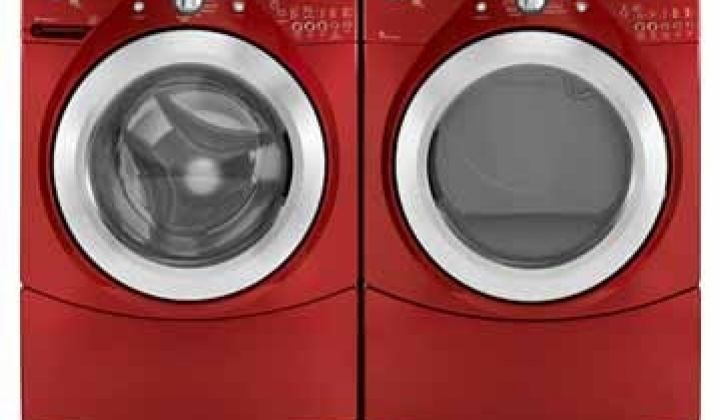Forget about home energy management systems -- one of the easiest ways to save energy in the residential sector just got a little easier. The Association of Home Appliance Manufacturers and the American Council for an Energy-Efficient Economy reached an agreement to increase the efficiency of most major home appliances, including refrigerators, freezers, washers, dryers, dishwashers and air conditioners.
The new regulations could help reduce the load of some of the most rapacious energy hogs in the house. Appliances account for about 17 percent of residential energy use, and that figure is higher for homes that have room air conditioners. In addition to increasing energy efficiency, the manufacturers will also petition the EPA to offer tax incentives.
It's not just fossil fuel use that will be curbed. The new appliances are expected to save about nine trillion gallons of water over the next 30 years, the amount of water necessary to meet the current water needs of every customer in the City of Los Angeles for a quarter-century.
The biggest savings will come from efficiency gains in clothes washers, which will see a water and energy savings starting in 2015. Refrigerators and freezers will use 20 percent to 30 percent less energy starting in January 2014. Room AC units will cut their energy use by 10 percent to 15 percent starting in 2014, while more 14 percent more energy efficient dishwashers that use about one-quarter less water will be on the market starting in 2013. Clothes dryers will only see about a five percent efficiency increase, but the EPA will be changing how it tests for drying efficiency, which could effect how current standards are enforced.
"This joint proposal will make the next generation of major home appliances the thriftiest ever when it comes to energy and water use," Steven Nadel, executive director of the American Council for an Energy-Efficient Economy, said in a statement. "The resulting energy and water savings will cut bills for consumers by billions of dollars and reduce global warming emissions for decades to come."
The new appliances are estimated to cut a home's energy bill by about six percent overall, which is the lower end of what some home energy management systems are offering in terms of savings. While the gains will be important, most homeowners will not run out to replace every appliance in their house -- so it could be decades before the full energy savings are realized. Currently, only about one-third of the appliances on the market meet Energy Star certification standards.
The new appliances may also come equipped with 'smart grid' features, essentially chips, most likely ZigBee-enabled, that will allow the appliances to communicate with smart meters and home energy consoles. But under the agreement, there will be two paths to Energy Star certification, according to Nadel. There will be high-efficiency appliances with smart grid capabilities or an even more efficient appliance without these capabilities.
Like changing CAFE standards, increasing efficiency in appliances is just another piece of the puzzle in efficiency. Lighting, heating and cooling are some of the other big energy users in homes, and commercial energy use far outstrips residential use, anyway. But everything counts.
Although the savings with new appliances might mean only about six percent for a homeowner who makes the investment, appliances that can automatically react to peak pricing (which will eventually be a reality, if only in rebate form at first) will be an asset. Because, despite the chatter about educating the American public about energy use, everyone really just wants to save money without thinking about it.



